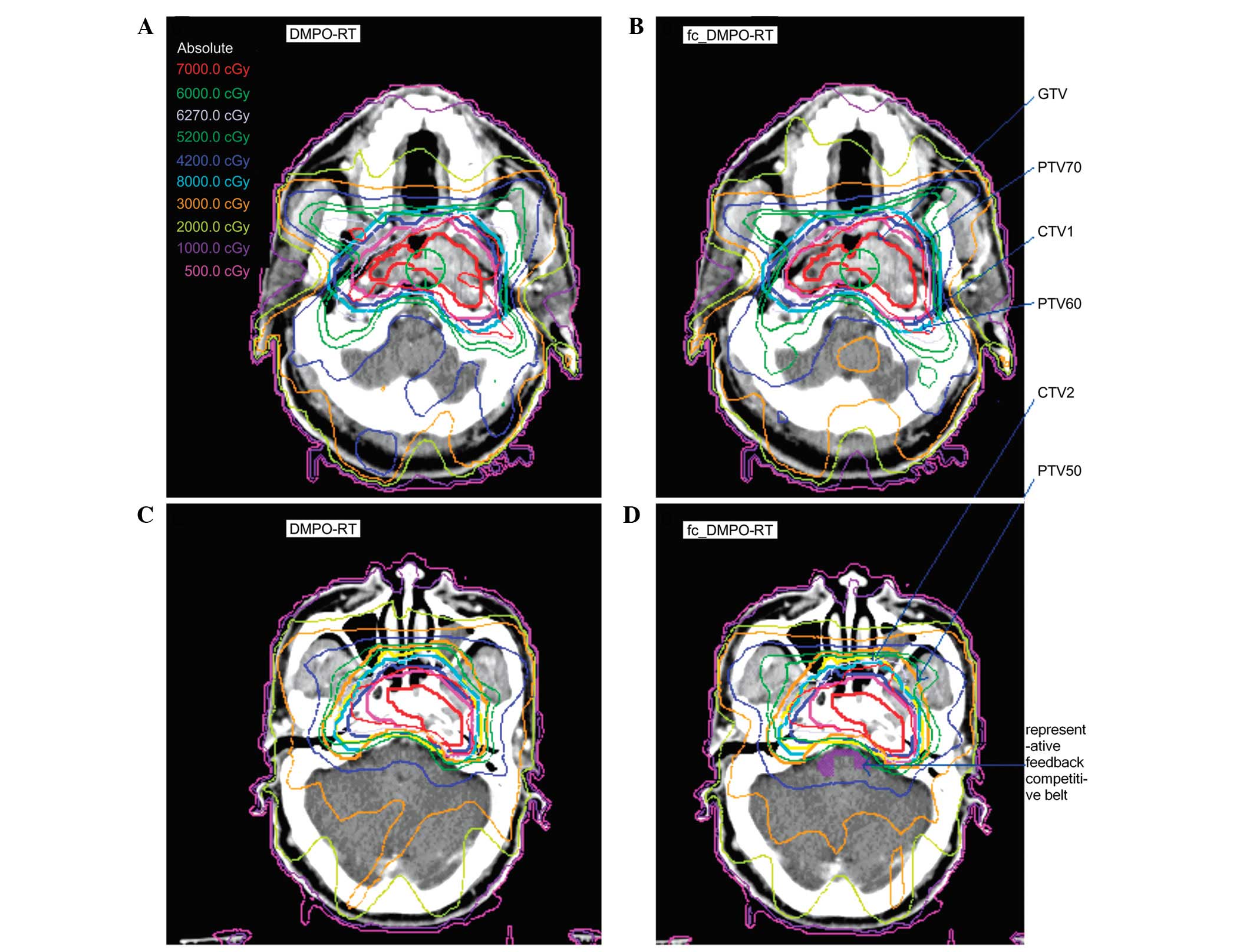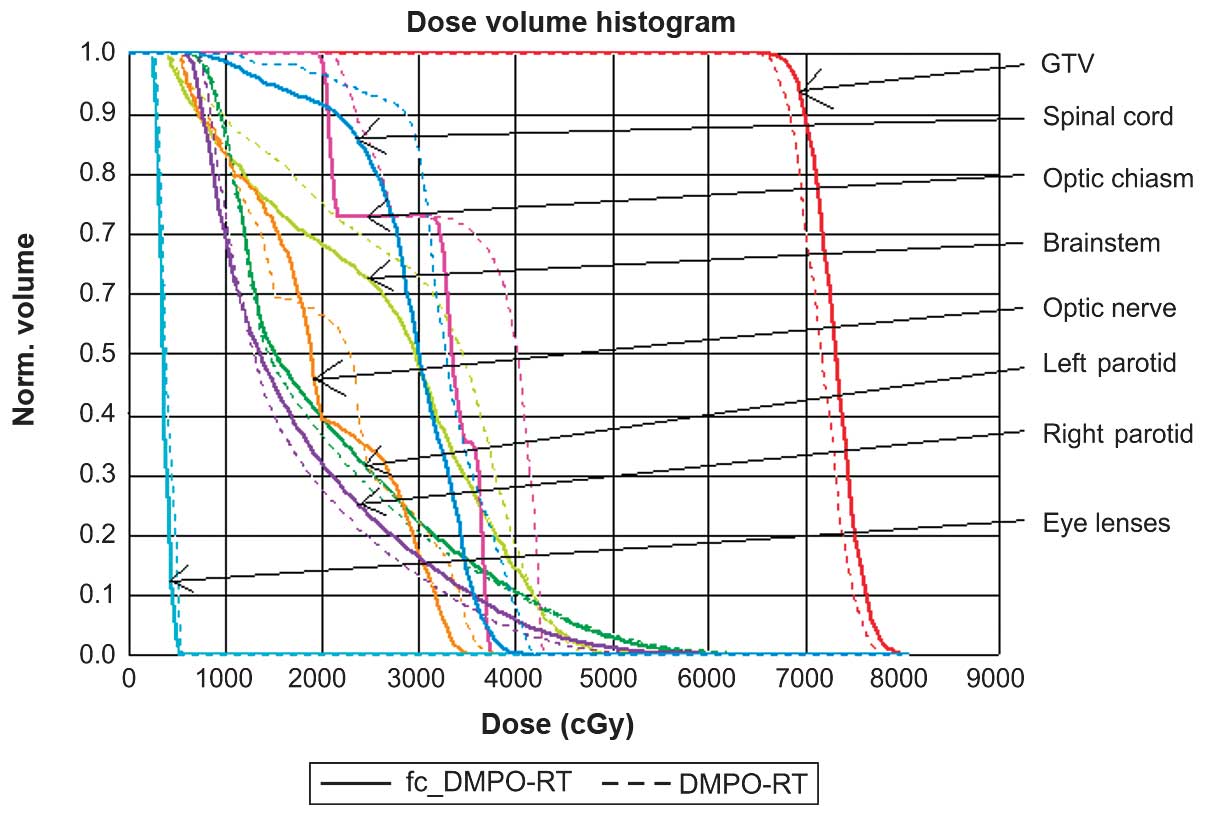A feedback constraint optimization method for intensity-modulated radiation therapy of nasopharyngeal carcinoma
- Authors:
- Published online on: July 23, 2015 https://doi.org/10.3892/ol.2015.3523
- Pages: 2043-2050
-
Copyright: © Li et al. This is an open access article distributed under the terms of Creative Commons Attribution License.
Metrics: Total
Views: 0 (Spandidos Publications: | PMC Statistics: )
Total PDF Downloads: 0 (Spandidos Publications: | PMC Statistics: )
Abstract
Intensity-modulated radiation therapy (IMRT) is able to achieve good target conformance with a limited dose to organs at risk (OARs); however, IMRT increases the irradiation volume and monitor units (MUs) required. The present study aimed to evaluate the use of an IMRT plan with fewer segments and MUs, while maintaining quality in the treatment of nasopharyngeal carcinoma. In the present study, two types of IMRT plan were therefore compared: The direct machine parameter optimization (DMPO)‑RT method and the feedback constraint DMPO‑RT (fc_DMPO‑RT) method, which utilizes compensative feedback constraint in DMPO‑RT and maintains optimization. Plans for 23 patients were developed with identical dose prescriptions. Each plan involved synchronous delivery to various targets, with identical OAR constraints, by means of 7 coplanar fields. The average dose, maximum dose, dose‑volume histograms of targets and the OAR, MUs of the plan, the number of segments, delivery time and accuracy were subsequently compared. The fc_DMPO‑RT exhibited superior dose distribution in terms of the average, maximum and minimum doses to the gross tumor volume compared with that of DMPO‑RT (t=62.7, 20.5 and 22.0, respectively; P<0.05). The fc_DMPO‑RT also resulted in a smaller maximum dose to the spinal cord (t=7.3; P<0.05), as well as fewer MUs, fewer segments and decreased treatment times than that of the DMPO‑RT (t=6.2, 393.4 and 244.3, respectively; P<0.05). The fc_DMPO‑RT maintained plan quality with fewer segments and MUs, and the treatment time was significantly reduced, thereby resulting in reduced radiation leakage and an enhanced curative effect. Therefore, introducing feedback constraint into DMPO may result in improved IMRT planning. In nasopharyngeal carcinoma specifically, feedback constraint resulted in the improved protection of OARs in proximity of targets (such as the brainstem and parotid) due to sharp dose distribution and reduced MUs.











